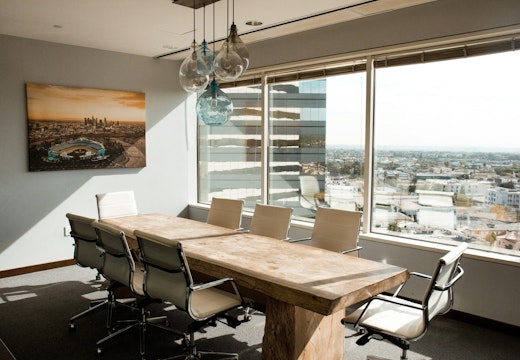Why flexible curation of space holds key to hybrid workplace
The results of a pilot study by Australian developer Mirvac to rethink office space has revealed that giving people the tools to adapt their own environment is key to improving group productivity
Giving employees the tools to curate their own office space may help to make hybrid working a success – and it could be the key to attracting people back to the office.
That’s the main finding to emerge from the first six months of a pilot project, the Adaptive Workplace, by Australian developer Mirvac to test new designs for office space in its own headquarters building at 200 George Street, Sydney.
Mirvac partnered with architects Davenport Campbell and engaged with technology supplier XY Sense to implement and trial the design solutions. The company rotated over one thousand of its employees through the new space – and saw workers return to the office at twice the rate compared to the traditional office floor, based on building gate entry.
The team with the most success at bringing employees back to the office experienced a 40 per cent uptake, driven by a proactive, multi-pronged approach to staff engagement and curation. In addition, half of those surveyed reported positive behavioural change in the way they worked in the new environment. Overall, there was an 88 per cent employee satisfaction rating.
Uplift in performance
Except for the ability to work undisturbed on tasks requiring deep concentration, the Adaptive Workplace saw an uplift in productivity, with employees considering it a more productive environment than the traditional office because of the opportunities to collaborate, coordinate a variety of work tasks and learn from others.
According to Paul Edwards, Mirvac’s General Manager of Strategy and Customer, who organised the Adaptive Workplace initiative, ‘Analysis of its results revealed some interesting differences between what employees think they want in the workplace and what their behaviours have proved they need or don’t need. For example, our employees told us they needed desk space, but when we looked at the data, it was clear from their behaviours individual workstations weren’t utilised as much as expected. Learnings like this helped us redesign the workspace and delivered tangible outcomes, validated by real research’.
Flexibility to thrive
Survey insights from Swinburne University, XY Sense sensor and occupancy data, direct user feedback and observational findings were analysed to measure employees’ experiences, with the results confirming that providing flexibility and choice about how to use the workspace can help teams thrive.
On busy days, utilisation data showed that while 95 per cent of desks were booked, 30 per cent were not occupied and on average, desks were used for only 2.3 hours a day. Rather than providing more workstations, the response was a strong focus on education on the etiquette of desk usage, reminding people not to ‘camp’ or leave personal items on a desk while working elsewhere.
‘Providing flexibility and choice about how to use the workspace can help teams thrive…’
Flexibility was embedded into the office design and change was constant during the pilot: the different Adaptive Workplace zones were reconfigured 12 times following user feedback. Flexible furniture on wheels and wireless power and data sources made it easy for people to redesign the space according to the task.
The most common space ‘hack’ by employees was the creation of a horseshoe-shaped space with a table in the common space to facilitate collaboration and idea generation. Phone booths were introduced and additional team and collaboration zones to help solve an ongoing issue of meeting room availability.
Change to dynamic
Highlighting the impact of flexible furniture on behaviours, Edwards explained: ‘Our employees told us that changing just one piece of furniture changed the culture and dynamic of the whole floor. They also told us how much they value being in the office to connect with their teams in person and how important it is to have the right spaces and technology available, so they can easily collaborate with colleagues working from home too.’
‘As hybrid working continues to be such a big challenge, the results are likely to generate significant interest…’
As bringing people back to the office and delivering a successful hybrid working environment continues to be such a big challenge for employers, the results of Mirvac’s pilot is likely to generate significant interest.
Mirvac is sharing its learnings with other businesses to help them navigate the evolution of their own workplaces. As part of the pilot, it conducted tours with 240 externals from over 65 companies. As other businesses embark on their own hybrid workplace journeys, Paul Edwards has this advice: take a holistic approach and be flexible.
Read Mirvac’s Insight Report on the Adaptive Workplace here.








